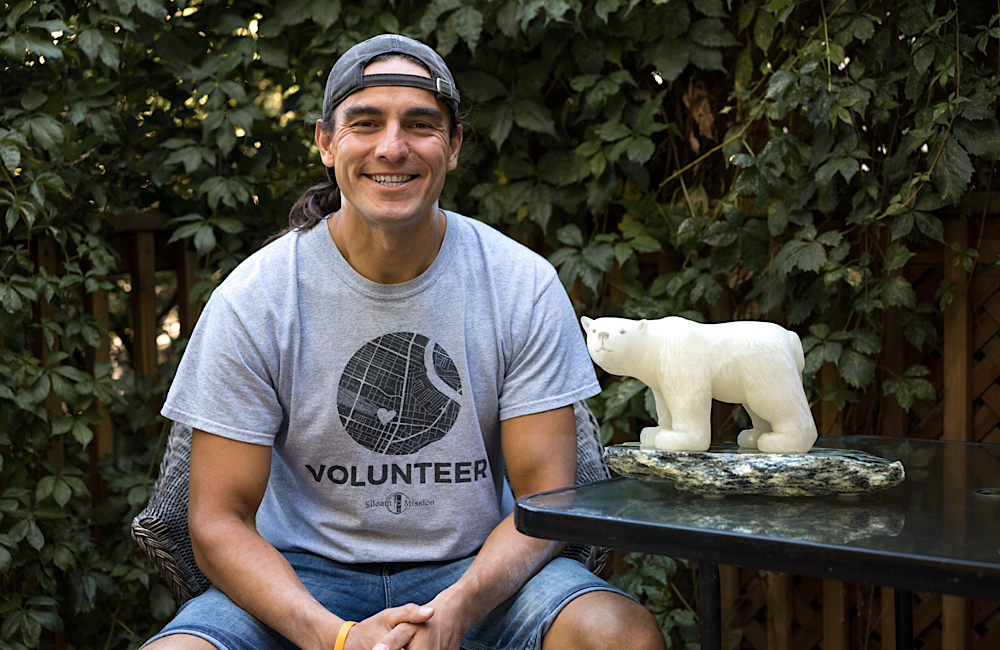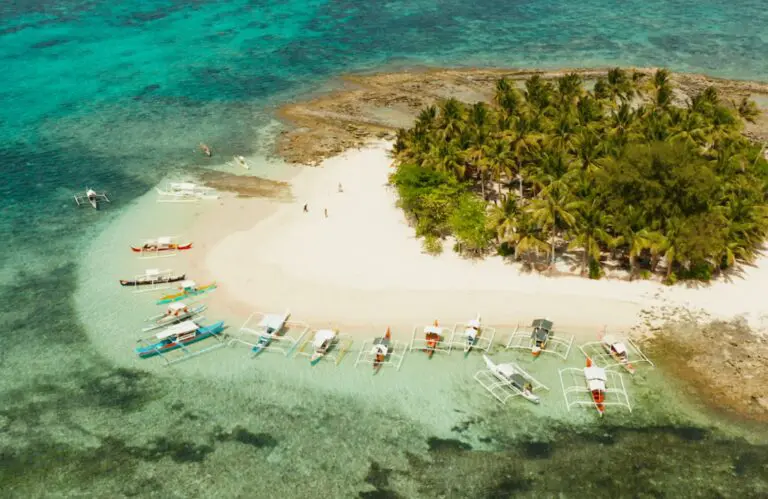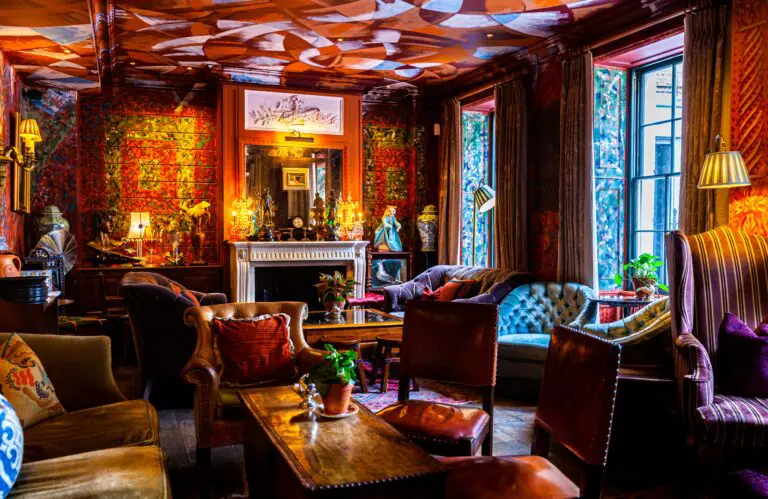I’ve travelled the world and told many stories. This one, in Manitoba, was the hardest I’ve ever had to write. Manitoba draws us in with its northern lights, polar bears and belugas. Winnipeg waits, too often overlooked. But the stories it holds will find you. And as cliché as it sounds, once you hear them, you won’t ever be the same.
Her dad cut her hair before she was taken.
“He knew what was coming,” she says.
“The clippers they used at the schools can get really hot and burn your scalp. And they weren’t gentle when they cut your hair. After, they poured (what we found out later) was DDT, onto our heads.”
Lorraine Daniels is the Executive Director of the National Residential School Museum, which is housed in the former Portage Indian Residential School, about an hour’s drive from downtown Winnipeg.
Canada’s residential school system operated for more than a century, forcibly removing Indigenous children from their families in a government- and church-run effort to assimilate them. Children were stripped of language and culture in these institutions, and some never came home. Lorraine is a survivor of residential schooling.
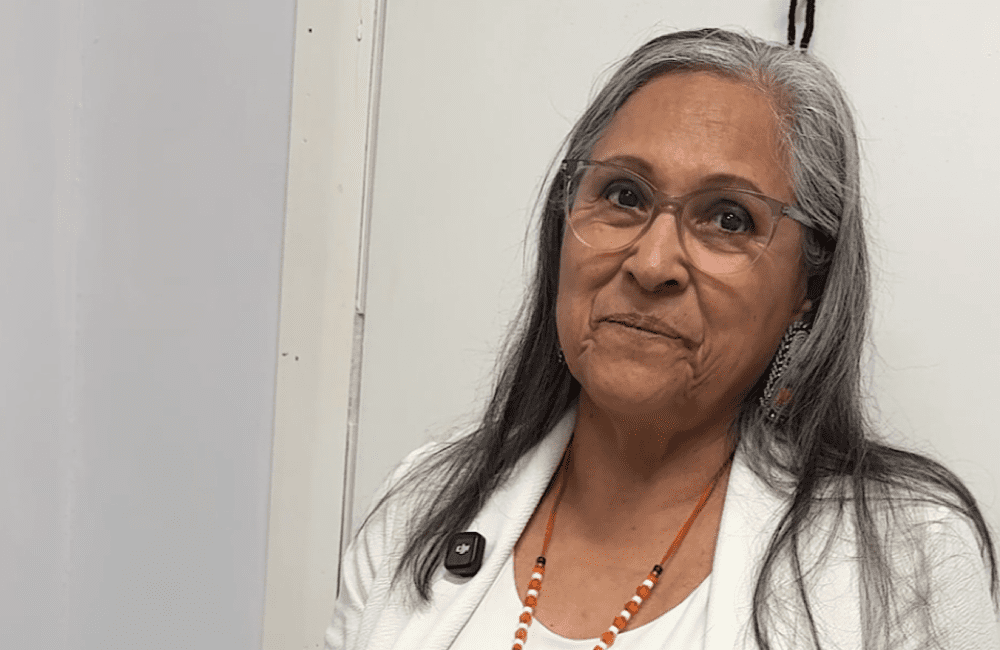
The stories she tells are quietly devastating. But the survivors, she says (and not all survived), are more than what was done to them.
She shows us a room decked out like a dining hall.
“This is where the priests and nuns would sit. They had fresh fruit, fresh meat. We were given porridge, often with bugs in it, mouldy from being stored too long. If kids vomited, they were forced to eat their own vomit.”
Her younger sister was one of those kids.
“She spoke fluent Ojibwe, so I think she had a hard time speaking English and she was stubborn at times. She didn’t like certain foods,” says Lorraine.
“One day, the nuns just beat her black and blue. My older sister snuck into the infirmary to see her and said she was in the foetal position, waiting for them to come back and finish the job. Her eyes were swollen shut, like little, bloody slits.
“They brought her down later when we were in the dining room, the boys on one side, the girls on the other, and she was just stark naked.”
They used her as an example. And, in a way, so does Lorraine. Her sister is now a successful businesswoman, has sat on the Council for a couple of terms, and has a Master’s in Psychology. Through counselling, she uncovered how her fear of eating in public or entering crowded shops is rooted in the trauma of residential schooling. She has largely worked through those wounds and built a life defined not by what was done to her then, but by what she has made of herself now, Lorraine says.
I ask Lorraine what her life was like before the schools. She smiles and talks about freedom. Summers spent outside, picking berries she knew by season. She smiles most when she talks about her grandmother.
“I just loved spending time with her. I had a really good bond with her.”
She’d follow around her aunts and uncles too.
“I grew up in a community of aunts and uncles and my grandparents, and they just took me all over the place.”
“I was so loved. I had so much love from them.”
She was taken at six.
In another room, she proudly shows us photographs from her time in the school’s Glee Club. It was through the choir that she travelled to Osaka, Japan, that she saw Prime Minister Pierre Elliott Trudeau and even the Queen. “It wasn’t all bad,” she says.

“Why did they dress you as Indians?”
The Glee Club are dressed in the type of costume you’d buy in Big W for Halloween. Lorraine is training a new exhibits curator. She questions the photo, almost surprised. Why strip their culture away only to dress them in pieces of it, a caricature, a theft turned into theatre?
There are other stories. Worse ones. There are videos of men breaking down as they speak of their abuse. There are others who describe their abuse as a matter of fact. Hardened. There are unmarked graves, in the ground and inside those who have endured the very worst of humanity.
But Lorraine speaks of naming, of carrying on, and of healing.
As I leave, I’m startled by the light outside. It’s like I’ve time-travelled Beatie Bow style and don’t quite know what to do with the weight of this sudden stone in my chest.
Why we all need to travel here. Like this.
I have loved Canada before. I’ve walked the red sand beaches of Prince Edward Island, hunted icebergs in Newfoundland, explored the ocean floor left bare by the world’s highest tides at the Bay of Fundy. I’ve looked on the serrated Rockies from the unblinking eye of a helicopter, watched the northern lights fracture the sky from a night train to Jasper.
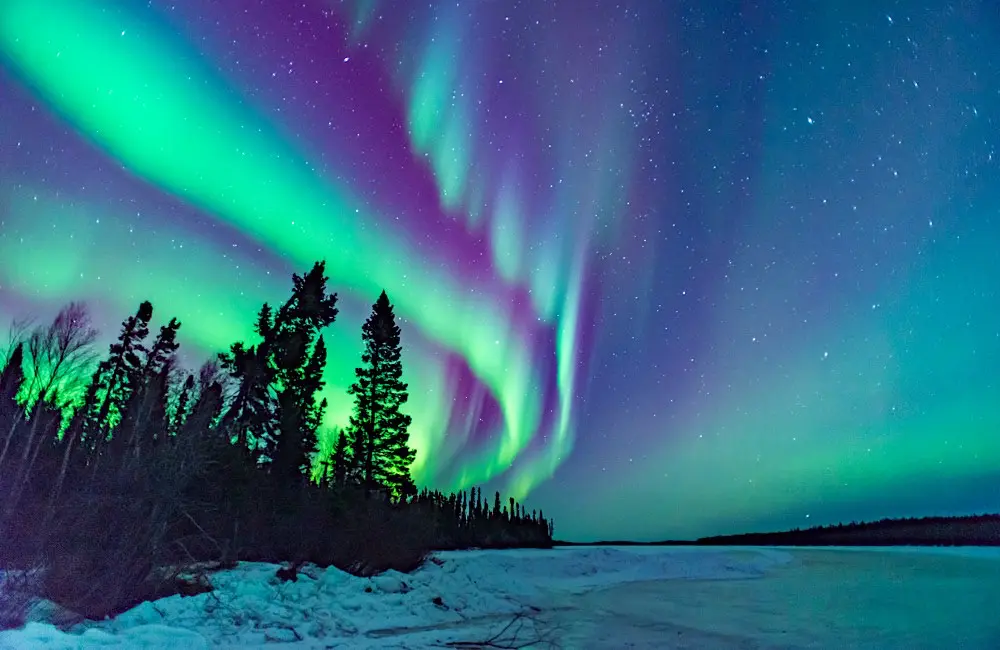
To love Canada is easy. It’s like ‘loving’ Ryan Gosling. But for that love to endure, for it to draw you back, there must be more. When you let its voices guide you, when you learn the stories of the place, then the love lasts.
I am so privileged to be able to travel the world so often, to have seen so much of it. But this trip through Winnipeg and Manitoba is — and there is no overstating this — perhaps one of the most profound trips I have ever taken.
I’m travelling with the most amazing people from Indigenous Tourism Manitoba, Tourism Winnipeg and Travel Manitoba. This trip is considered, for both the host and the guest. In the teaching there is learning, in the conversation there is dialogue.
Every meal, bed and purchase is a choice that says we value your story. We’re staying at the Indigenous-owned Wyndham Gardens Ode Akiing, joining Indigenous-owned tours, eating in Indigenous-owned restaurants.
And I’ve never before felt so connected to a place, so included in its story, and so welcomed.
This trip has made me love Canada more. And that’s with no wild bears, no northern lights.
The ties that bind
We arrive at the Métis‑owned Moon Gate Guesthouse on the Whitemouth River. It’s beautiful here. The kind of beauty that feels like a memory: sunbursts across the river and dancing dandelions. I very quickly realise I want to be adopted by our hosts, Jenny and Michel. Man, can Michel cook. But it’s more than that, I feel folded into this place, as if I belong here.
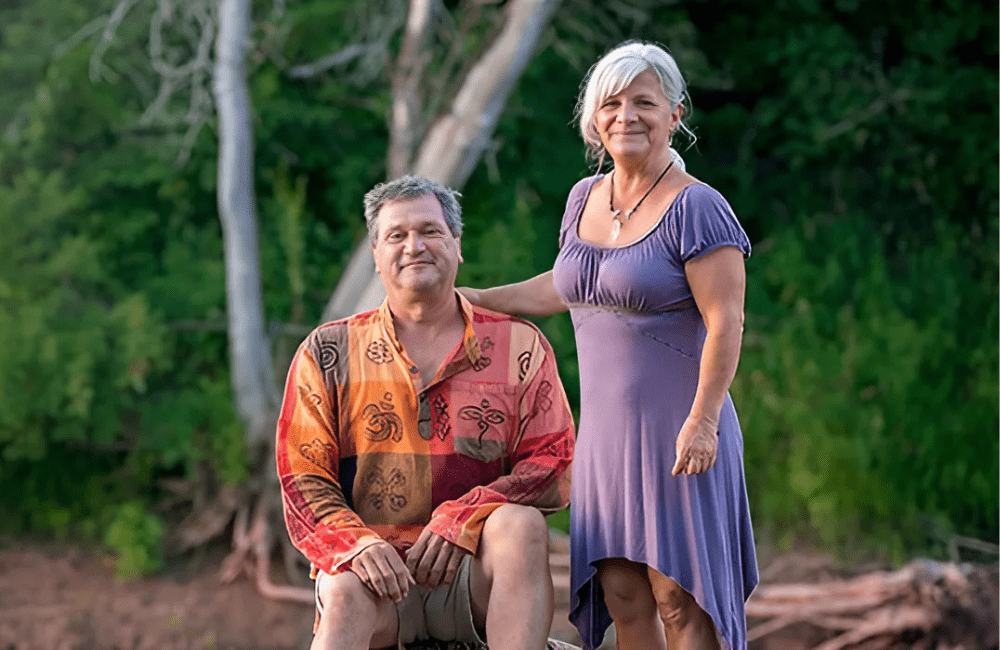
We’re gathered into a circle in the guesthouse living room for a Borealis Beading experience with Melanie Gamache.
As she teaches us some simple beading techniques, she shares not just her family history, but how, through beading, she found healing and connection. She talked of how beadwork is an archive of memory, a way of speaking that lives in the hands.
The hard centre of the story
I’ve been gifted so many stories now that I am suddenly uncertain of how to proceed. What right do I have to participate in this? To write about this? My own country carries its own wounds and failures. This one, I can leave. Travel is a privilege that can widen a gaze or flatten a place into pictures.
And sometimes there’s an urge, when faced with a traumatic history to write in large strokes. But harm is specific. It has names and dates. And ripples that reach through generations like a stone, skipped on a deep river.
Carving a place for myself
On our final full day, we’re in a conference room at the Wyndham Gardens Ode Akiing. Long tables are laid out with carving tools.
“I do things a little bit different,” smiles the barefooted Fred Spence.
“I’m interactive,” he warns.
He lays out slabs of stone and invites us to choose. Beside them sit his own carvings. To imagine our hard, flat blocks becoming something that even resembles his works, creatures with depth and weight and life, feels almost unthinkable.
We draw outlines onto the slabs. And very, very hesitantly start carving.
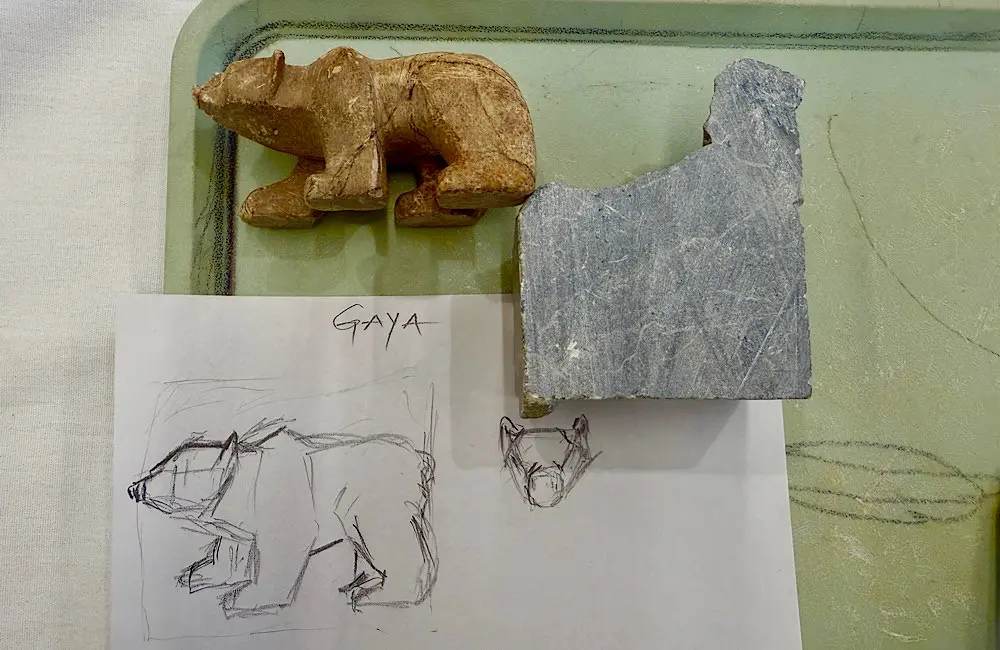
Files rasp. Edges soften. The room empties of small talk. The effort holds us.
Fred comes to each of us. Helps us coax the shape from the stone. And as we work, he starts to talk.
“I like to talk about the things that typically end up being hidden in the dark,” he says.
“The biggest struggle people have is talking about the darkness. Residential schools, the Sixties Scoop, everything that’s happened to our First Nations and Inuit here in Canada, has had these ripple effects, right? And I’m a product of that.
“One of the things that I didn’t have growing up was a spiritual connection to my culture. I wasn’t allowed to go around powwows or sweats and do smudging and a lot of things that you don’t realise are meant for our spirit.
“The schools, they took that away. They took that connection, away from our community, from ourselves, from our family, from the land, from the animals. And that’s why you see so many people who are still struggling. It’s because their spirits really hurt, and it’s really hard to find their way back.
“When I was 17, I lost a really close friend of mine to suicide. She was only 14, and she was in the Child Family Service and welfare system. A product of residential schools.
“At that time, I had no idea what mental health meant. It was stigmatised. It wasn’t highlighted enough in the community. I didn’t have any coping mechanisms other than drugs and alcohol. So that’s what I turned to.
“I’m a recovering addict. I spent nine years of my life trying to understand what had happened, but really, I was just running away from that hurt.
“And then I just one day, woke up and I said, I’m done. I want to experience joy.”
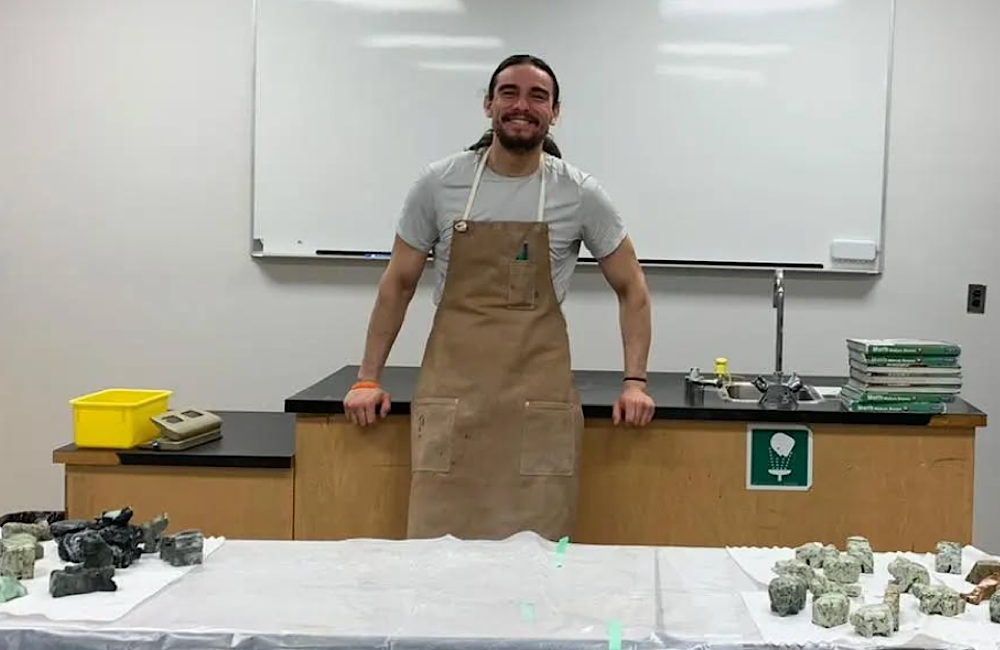
“I was driving my motorcycle over a bridge, and the sunrise came over, hit the water, just perfect. And then I just started crying. I was so happy to be alive. And that was joy.
“But I didn’t know who I was. And one of the things that I sought out was connection, spiritual connection. So I went to a Medicine Man and I started doing ceremony and sweats and Sun Dance.
“And then I thought, what brought me joy when I was a kid, and it was art. So I started sketching. I did some wood carvings that were horrendous, so no one saw them. And then I found soapstone.
“It was the Ancestors. While I was jogging, I stepped in a gopher hole, I broke my foot, and I was off work for nine weeks. I was going stir crazy, and I started carving.
“The first carving I tried to do was a white tail buck, antlers and everything. After two weeks of working on this carving, it fell and broke. I had all the feelings of anger and frustration and disappointment, but I bought super glue.
“I tried again. This time I did a bison, bigger body, smaller horns. And when I finished it, there it was, it was joy again. And I gave that to myself.
“I set a goal, I got the stone, I worked hard, and at the end I had this thing that I created.”
It’s hard work, carving. I’ve broken two nails, filed off skin. The stone dust sticks to my sweat. When the forms finally emerge, we wash the pieces and the stone we thought was grey is suddenly marbled green or speckled ochre. The colours come alive. I joke that it’s like giving birth. There’s this hard work, then surprise at meeting this thing you’ve grown. It feels like bringing something up from the deep.
Canada, naturally
This was not Canada performed through a filter. This was Canada as it is, offered by people who live there and keep living there after I leave. It’s easy to be wowed by polar bears and northern lights in a prairie sky. It is harder, and much richer, to be changed by a room where a survivor tells her story and opens a door for you to learn. It is harder, and much richer, to be changed by a carver who teaches through laughter, failure, dust, and the moment the stone wakes in water.
I keep the small carving on my windowsill. It’s not perfect. But it holds the time when my hands didn’t know what to do, then learned. It holds Fred’s voice, playful, generous, certain that we can do more than we think. It holds the horror, hard and cold, carved into something I hope will be useful.
A visit to Manitoba means travelling through Treaty 1, 2, 3, 4 and 5 Territories and through communities who are signatories to Treaties 6 and 10. Manitoba is located on the ancestral land of the Anishinaabeg, Anishininewuk, Dakota Oyate, Denesuline and Nehethowuk Nations and is the Homeland of the Red River Métis. Northern Manitoba includes lands that were and are the ancestral lands of the Inuit.
Over 2,700 Indigenous-owned and operated businesses exist across Canada. Many Indigenous experiences are hosted in remote communities, allowing visitors exclusive access to protected regions or territories that aren’t accessible to the public. The Indigenous Tourism Association of Canada supports and promotes Indigenous‑owned tourism through its The Original Original mark, which helps travellers identify authentic Indigenous experiences and businesses across the country.
If any of the stories here have affected you, please know that support is available. In Australia, you can call Lifeline on 13 11 14 for 24/7 crisis support. For Aboriginal and Torres Strait Islander peoples, you can connect with 13YARN on 13 92 76 to speak with an Aboriginal or Torres Strait Islander Crisis Supporter. In Canada, support is available through the Hope for Wellness Helpline at 1‑855‑242‑3310, which is available 24 hours a day, seven days a week. If you are a former residential school student in distress, or have been affected by the residential school system and need help, you can contact the 24-hour Indian Residential Schools Crisis Line in Canada on 1-866-925-4419.
Karryon travelled to Manitoba with Destination Canada and Air Canada.
Karryon’s new Into the Hearts of Canada podcast series, presented in partnership with Destination Canada, explores the people and places shaping one of the world’s most awe‑inspiring destinations. Subscribe now and take your clients deeper into Canada’s heart.


